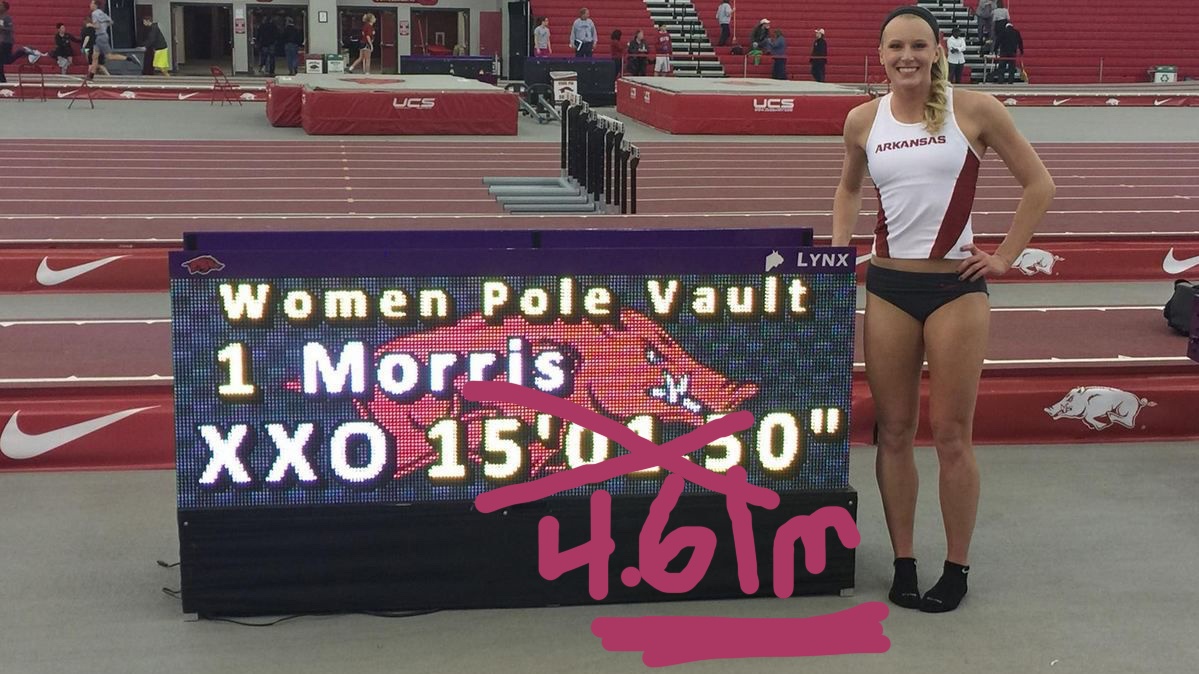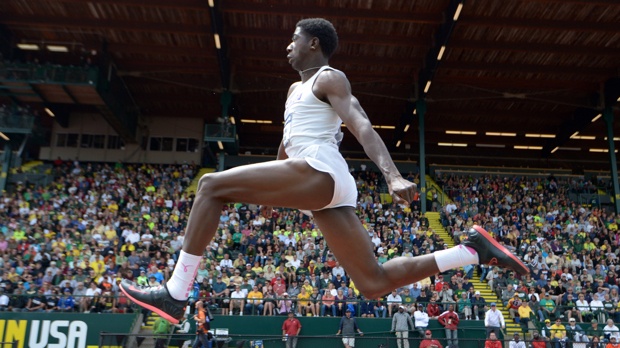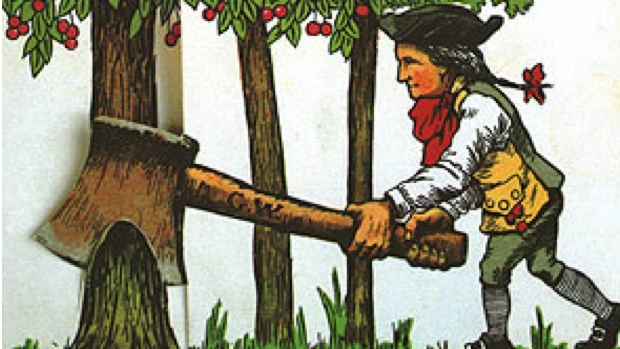How Should We Measure? Meters or Feet
How Should We Measure? Meters or Feet
How Should We Measure Meters or Feet


By: Dennis Young @dpyoung13
Feet and.. What Are They, Inches? - System is Trash, or, The Follies of Empire
Last week, Funkmaster Flex dropped an absurd, sound-effect-filled rant attacking Jay-Z for copying his app and blocking him from playing Dipset songs at a club in New Jersey. (The most underrated state!) The funniest part, the most incomprehensible part, the part ably parodied by Hannibal Buress: he used a bomb sound effect between literally each sentence. I couldn't understand how someone, much less an adult, could get so worked about anything, much less apps.
Last week, Funkmaster Flex dropped an absurd, sound-effect-filled rant attacking Jay-Z for copying his app and blocking him from playing Dipset songs at a club in New Jersey. (The most underrated state!) The funniest part, the most incomprehensible part, the part ably parodied by Hannibal Buress: he used a bomb sound effect between literally each sentence. I couldn't understand how someone, much less an adult, could get so worked about anything, much less apps.
Until this past weekend. (Menacing Flex voice) I saw a tweet.
-- David Monti (@d9monti) January 17, 2015
I feel the same (possibly strange and incoherent) way about people using imperial measurements as Mstr. Flex must have felt about Hov copying his app. We should not be using feet and inches for marks in field events. Here's why.
1. It's Wildly Inaccurate
People were referring to Sandi Morris's college vault record as "15-01.50,"a number that charitably contains at least one error, a number that is indisputably less elegant than 4.61, and one that tells a far more boring story than Morris raising the bar by a single centimeter.
I guess that's where you start a defense of the metric system for measuring field events: actual track & field meets. The standards in the two vertical jumping events are measured (and therefore moved) in meters and centimeters, not in feet and inches. They contain parallel approximations of what those metric marks convert to in imperial, but they are only truly accurate in metric.

About that error mentioned above: 4.61 meters isn't 15 feet, 1.50 inches. It's 15 feet, 1.4964 inches. It is, however, 4.610000000000000000000000 (math people, don't get mad here, I know) meters. It is, charitably, 15 feet, 1.5 inches, but that second decimal place would be insulting to even a fifth-grader learning significant figures for the first time.
The extraneous zero comes from the ridiculous practice of converting imperial marks to the quarter inch, which leads to all kinds of inaccurate bull. Check out The Cutoff there are fifty centimeters between Shawn Barber's (Vaulter A) nation-leading 5.80m vault and Pauls Pujats's (Vaulter B) #14 5.30 jump. Those jumps are converted to "19-0.25"and "17-4.25,"respectively, for a delta of exactly twenty inches.
Vaulter A beat Vaulter B by 50 centimeters, which equals 20 inches.
Now if you dive beyond the top 20, there are also fifty centimeters between Pujats's mark and the #93 mark in the nation, 4.80m by Sean Daugherty (Vaulter C). That mark is converted to "15-9,"which is 19.25 inches lower than Pujats's 17-4.25 mark. See the problem here?
Vaulter A beat Vaulter B by 50 centimeters, which equals 20 inches.
Vaulter B beat Vaulter C by 50 centimeters, which equals 19.25 inches.
American track & field media, where 20 = 19.25; roughly five percent of a performance gets butchered on the altar of a tiny group in the sport mewling about their tiny brains being unable to comprehend scary, scary centimeters.
If this article accomplishes nothing else, I hope that it at least sticks a dagger on the practice of converting metric marks to fictional quarter-inches. Doing so is simply wrong and terrible math. But I want to go further: we should stop converting marks entirely.
2. It doesn't make the sport more attractive, which is the entire point of the conversions
It might seem silly to drop [BOMB]s over three-quarters of an inch getting lost in translation, but here's why imperial conversions are so irritating: they're totally unnecessary! Go to a track meet, and you'll hear the even the crustiest of coaches and the meathead-iest of athletes speaking fluently in metric.
With few exceptions, people who actually go to meets refer to field marks in metric. It's lazy media members who think that de-Americanizing track is somehow the death of the sport in this country who insist on the English marks. You've heard it before: to the average American fan, an eight-meter jump is meaningless, but clearing twenty-seven feet has real significance. Here's why this is false: people are utterly innumerate. Larry Rawson's incessant proclamations of "That's like running a lap of your high school track in 60 seconds four times"are so useless not because they're grating and repetitive (though they are); they're useless because they don't register with people with no personal intimacy with ideas of time and distance--which is to say, most sports fans.
To who isn't, say, an athlete, engineer, or construction worker, twenty-seven feet is every bit is meaningless as eight meters. Even if your mind and body are trained to quickly calculate those distances, something that's twenty-three feet away looks about the same as something that's twenty-eight feet away.


Appreciation of marks come from seeing them in person, comparison to everyday objects (which is why street and mall meets are so great), and comparison to historical marks. Think about it this way: bug-eyed, you tell your non-track-loving friends that you jumped eight meters this weekend. They look at you quizzically before you say "that's like twenty-six feet"and they freak out.
Holy sh**, twenty-six feet! You're a freak, man. I couldn't ROLL twenty-six feet.
They'd say the exact same thing if you told them twenty-one feet.
So why bother converting it to feet and inches at all? To satisfy media members and sports information directors, who fear their non-track-loving editors and bosses asking them "Get that metric nonsense out of here"
Ok, fine. We need to translate our native language for tourists. We welcome tourists! Without track non-natives, the sport is in serious trouble. This column isn't "Keep Track & Field Weird" there are plenty of problems that our sport has and that need to be radically fixed. But the metric system isn't one of them. A good tourist tries to learn the language of the country he or she's in; in Jumpthrowia, that language is metric. If, like a terrible tourist, you refuse to learn the extremely simple native language, the least you can do is translate it in a way that admits your limited understanding and doesn't add any errors.
Also, if you insist on using imperial, you love England, and by extension, hate America. George Washington chopped down a cherry tree that was 4.87m tall.


3. If feet and inches aren't how we make field events more attractive, then how do we?
I was emailing with a track coach about this, and here's part of her response:
You're not wrong when you say that Joe Schmo would freak out whether you told them a jump was 21 feet or 29 or whatever. But--and I say this as a track coach and experienced athlete who gets, uses, and likes metric--twenty-one feet is far. Twenty-seven feet is far. Eight meters is ????
You're not wrong either, coach! I just think that the use of imperial marks in our sport muddles the (more accurate, nearly universally used by collegiate and professional athletes and coaches) metric system into that "????"And I really, really don't think that using English brings a "wow"factor to field events; in fact, the ubiquity of metric gives uncreative imperialists an opportunity to offer a useless solution.
Stop converting metric-measured marks into feet and inches. In the unlikely event that your cranky sports information director or grandparent asks "what's that in American," you can Google it for them. And if they're asking, that almost certainly means that they missed the meet, which is perhaps the real issue at hand.
How do we make field events more attractive for people to attend and watch online/TV? There's no shortage of solutions there: have the meet in the street or in the mall, paint the sectors different colors, abuse the hell out of holograms, have first-down-style digital lines, and most of all, never, ever use a head-on camera shot in the long and triple jumps. But converting metric marks into imperial isn't a solution. It's a problem.
The views in this column do not necessarily represent those of Flotrack or the author's employer.